Dernière modification le 17/08/2024
Difficulté
Moyen
Durée
7 heure(s)
Coût
1 EUR (€)
Description
The aim of this tutorial is to show the steps involved in producing a prototype thermal curtain.
Introduction
Insulating curtains are essential accessories for the home, for nomads in a van, converted lorry or camper van.
They protect your home on wheels from the cold in winter and the heat in summer.
Matériaux
- Blue part of the mask :
- Waterproof
- Inter-layer part of the mask (white part) :
- Contains polypropylene (High durability - excellent insulation - recyclable ...)
- Empty packet of crisps (contains aluminium):
- Heat-reflecting layer
- Sponge:
- To separate showers from aluminium, to create a gap between two layers of aluminium to increase thermal insulation (R-value).
- Cartoon:
- More specifically, in the areas where the stitching runs, so that the two layers of aluminium don't stick together, thus avoiding heat transmission.
Outils
Scissors, needle thread (many), stapler
Étape 2 - material assembly
from outside to inside:
- Overlay 4 layers of the blue part of the mask.
- Overlay 4 layers of the part in the middle of the mask (white-poplypropylene part).
- Add a layer of the extended chip package (reflective layer).
- Glue the rough part of the sponge previously cut into pieces.
- Glue pieces of card on the lines where the seam will be made.
- Mettre l'autre couche de l'aluminium (pour réfléchir la chaleur qui est à l'intérieur).
- Superposer 2 couches du tissu de polypropylène.
Draft
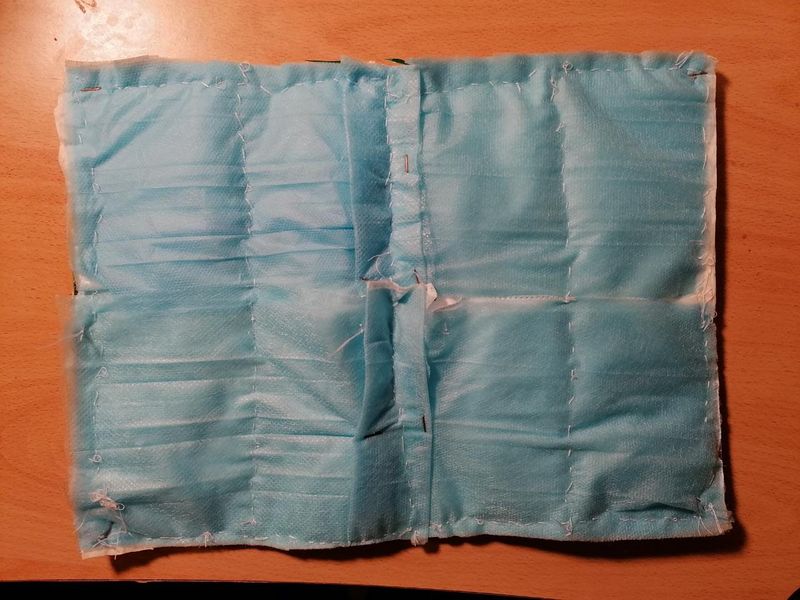
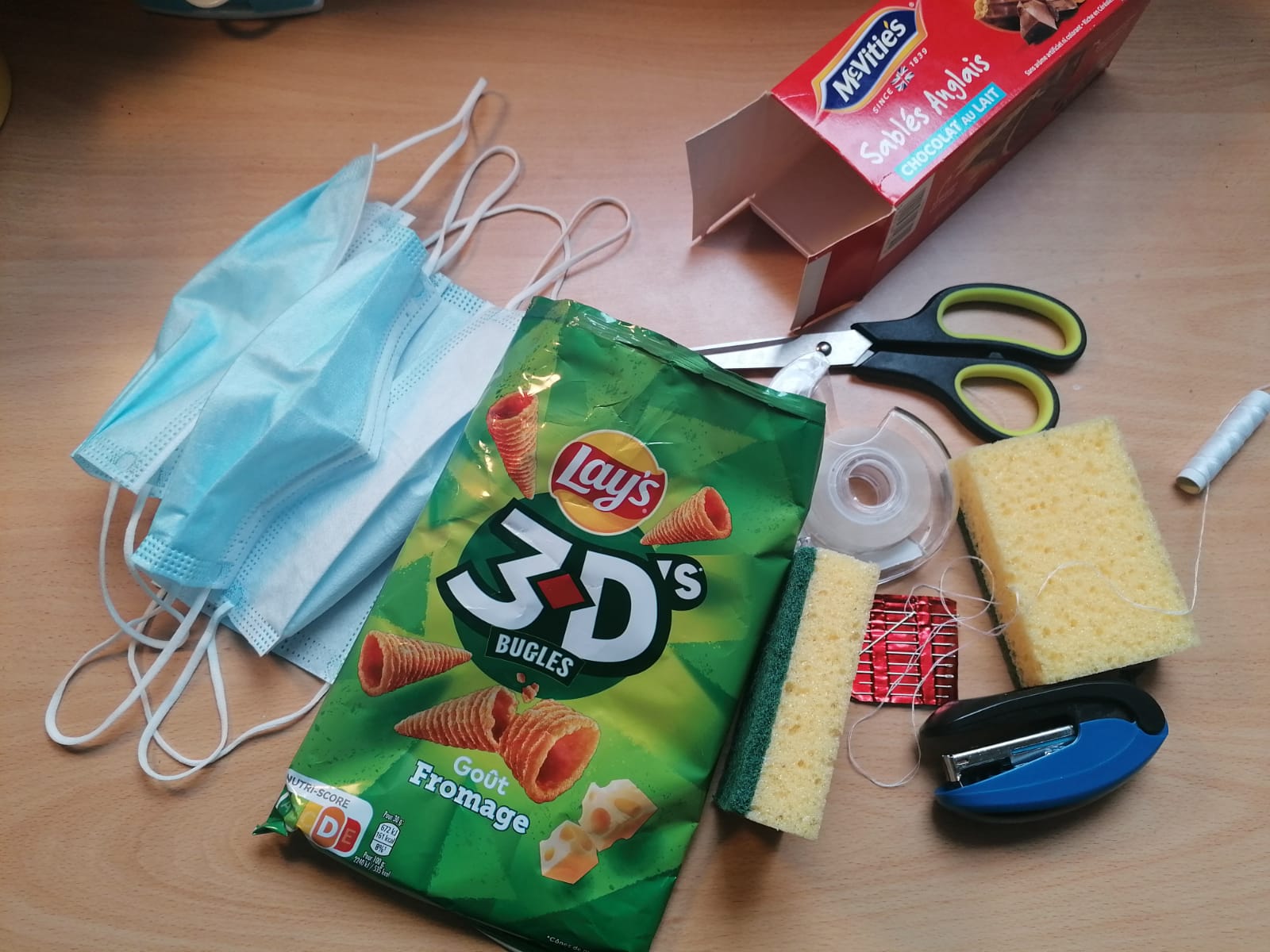
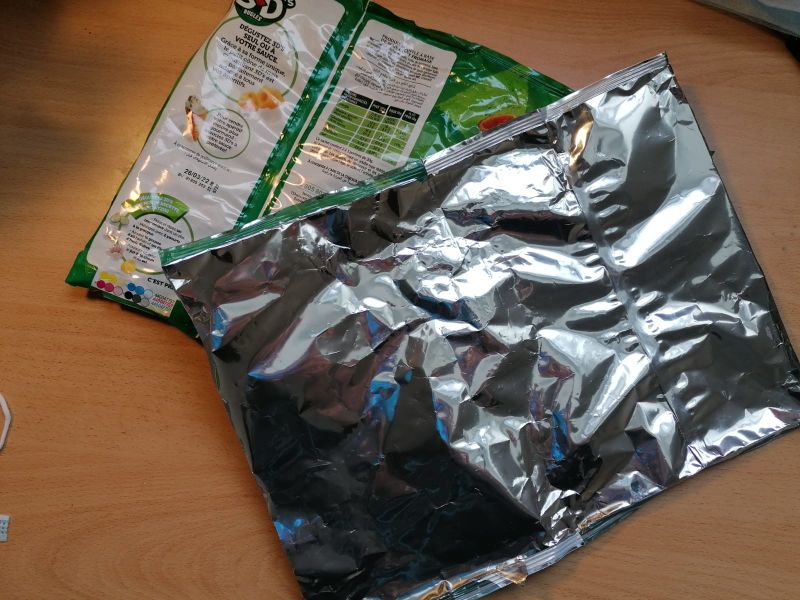
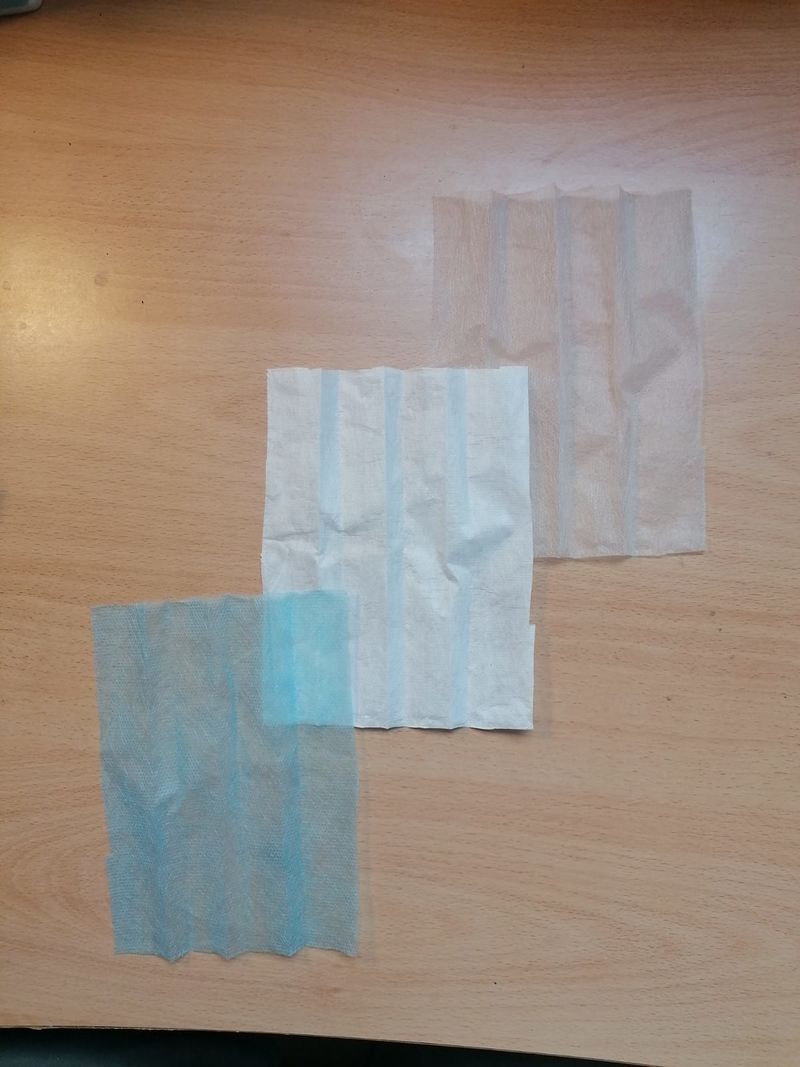
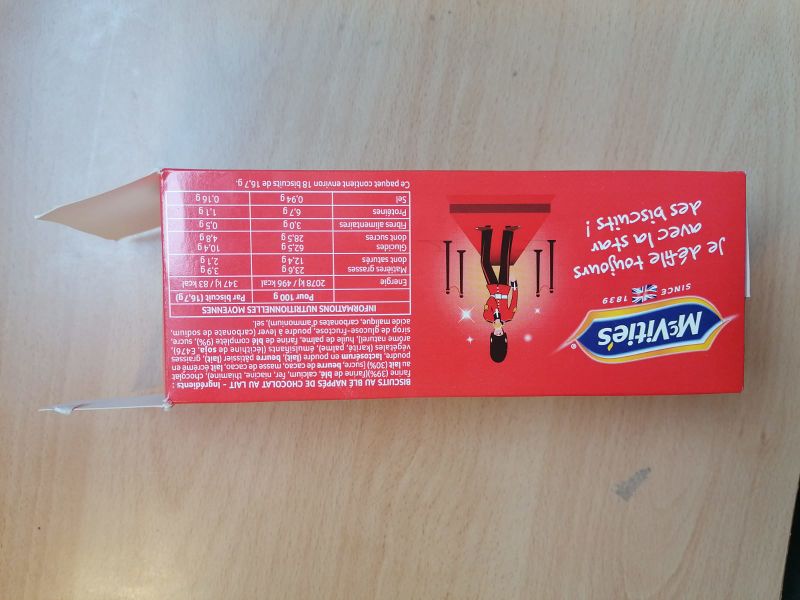
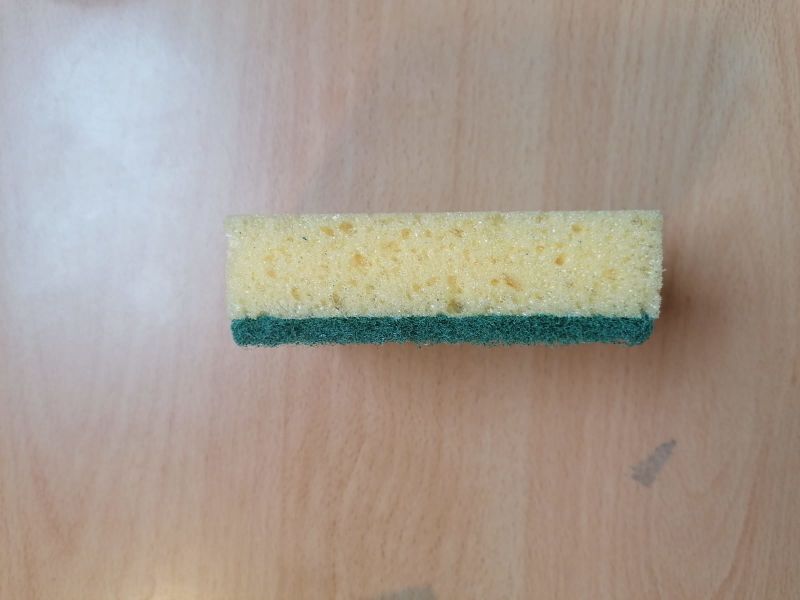
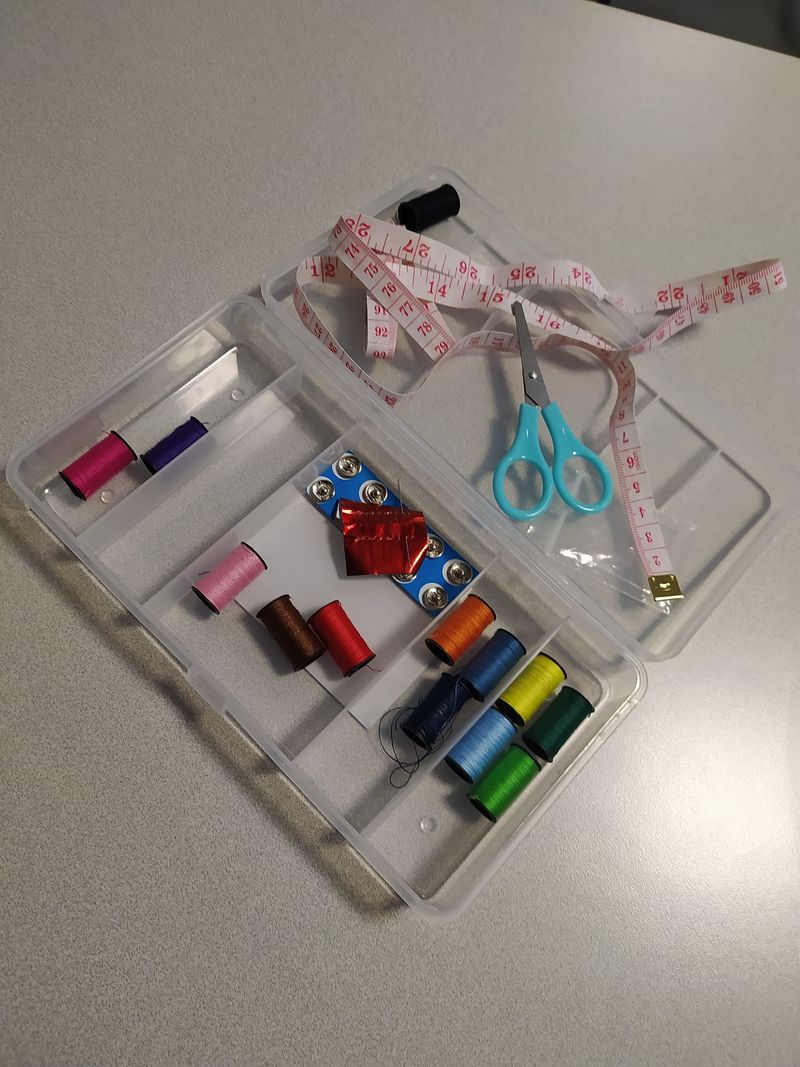
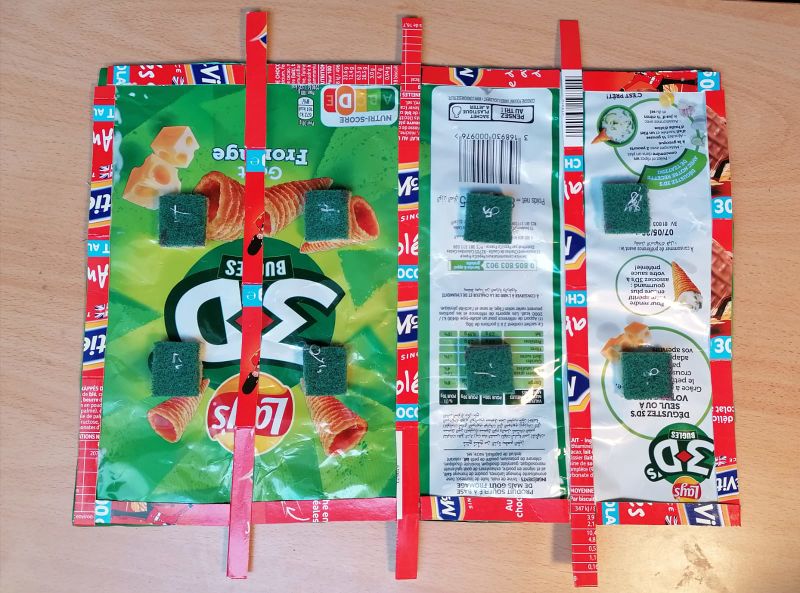
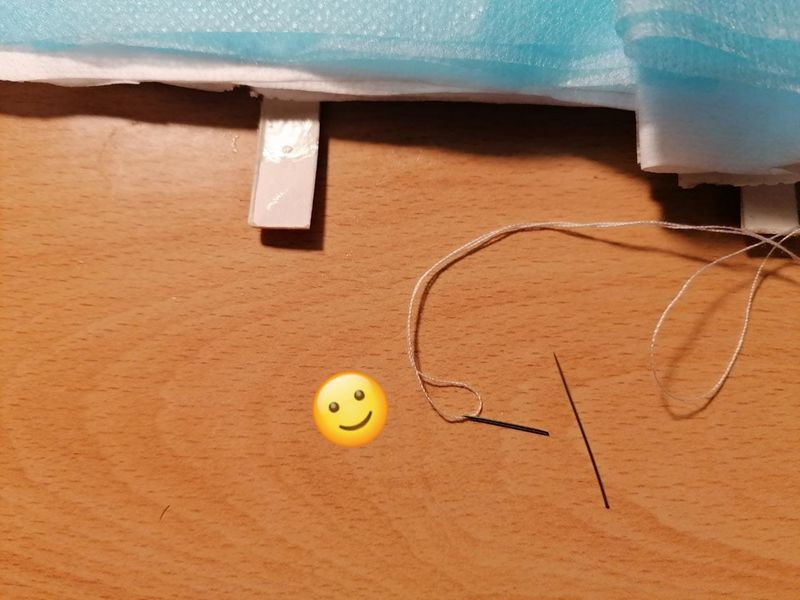
 Français
Français English
English Deutsch
Deutsch Español
Español Italiano
Italiano Português
Português